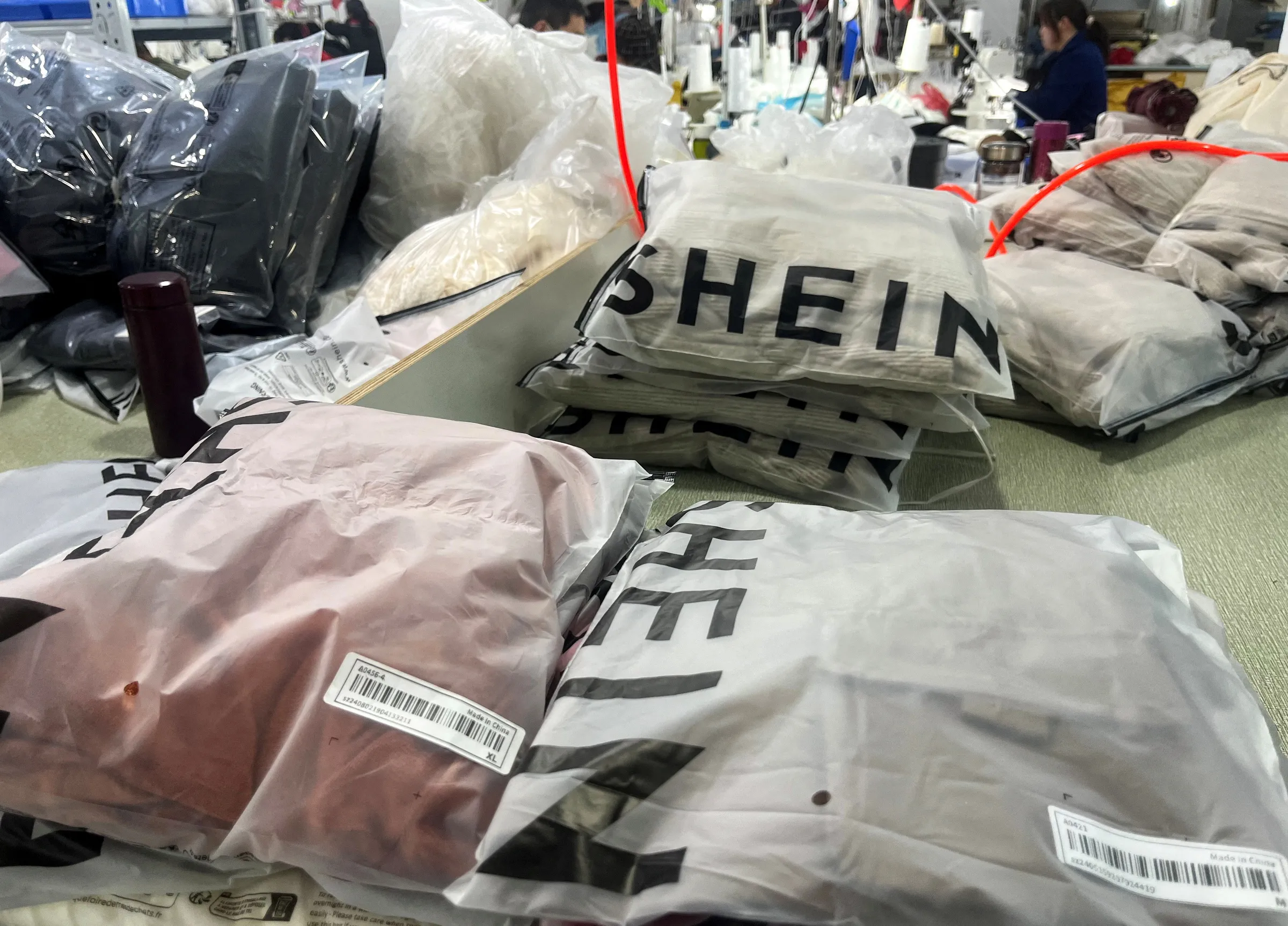Context is powered by the Thomson Reuters Foundation Newsroom.
Our Standards: Thomson Reuters Trust Principles

Packs of clothing are pictured at a garment factory for Shein in Guangzhou, Guangdong province, China April 1, 2025. REUTERS/Casey Hall
Emissions in the apparel sector keep growing alongside demand for fast fashion, despite net zero pledges.
DHAKA, Bangladesh - The world's demand for fast fashion has allowed greenhouse-gas emissions to rise despite ambitions to decarbonise supply chains by 45% by 2030.
More than 600 fashion companies have adopted science-based targets for emissions reduction, compared with just over a dozen in 2019.
Yet the sector's emissions grew by 7.5% in 2023 from the year before, said a report last month by the Apparel Impact Institute (AII).
Aligning with the goal of limiting global temperature rise within 1.5 degrees Celsius under the Paris Agreement would require slashing fashion's absolute emissions from 0.944 gigatonnes to 0.489 gigatonnes in the next five years, according to the AII report.
The problem is that many brands pledge reducing their emissions intensity, meaning emissions divided by revenue or gross profit, so as they grow, they pump more greenhouse gases into the atmosphere, said a recent study by the German think tank New Climate Institute.
Since making their pledges for decarbonisation, 40% of brands saw their emissions grow in absolute terms, according to an analysis by consulting firm McKinsey & Co.
In one case, emissions by the Singapore-based fast-fashion giant Shein Group grew by 18% in 2024, as it uses air freight rather than container vessels to ship its products the world.
More than half of apparel emissions take place upstream, in the fossil-fuel intensive processes of washing, dyeing and finishing in Asian textile mills.
That leaves brands seeking ways to reduce emissions by their suppliers in apparel production countries.
Apparel makers can cut carbon emissions and reduce energy use by replacing fossil fuel-fired boilers with renewable-powered electric boilers for heating water and setting up rooftop solar panels in factories.
Small efficiency measures like recovering and reusing waste heat generated during heating water, plugging leaks and installing better insulation could provide energy savings of 5% to 18%, said a study commissioned by the United Nations' Fashion Industry Charter for Climate Action.
More costly investments in energy efficiency - such as upgrading boilers and redesigning heat systems - could cut the sector's energy use by half, it said.
Most of these actions would need to take place in textile factories, but suppliers competing with one another to offer brands the lowest prices for their products have few resources available for decarbonisation investments.
Funding could come from banks or specialised funds.
Banks like HSBC are offering concessional loans to clients for projects like installing energy efficient water-heating equipment, and AII's fashion climate fund plans to secure $10 million from seven major funders including H&M Group and Lululemon by 2030 to fund affordable climate solutions for manufacturers.
Brands' participation in decarbonisation investments has been sparse. In a 2023 report, McKinsey said overall only 1% of brands had entered into shared investment with their suppliers.
Energy-efficient investments can have long pay-back periods of ten to 15 years, and suppliers making the investments would need long-term business commitments from brands, said a paper commissioned by the Fashion Industry Charter for Climate Action.
Asian countries like Bangladesh, China, Vietnam and Cambodia, which account for 65% of global apparel production according to HSBC, have country-specific challenges to decarbonising textile.
While China's use of solar power and India's renewable energy capacity have grown, their textile mills still use boilers fired by coal - a big source of emissions.
Bangladesh has only a small share of renewable electricity in its national grid.
Brands like H&M are testing direct corporate purchases of electricity from renewable power producers in Vietnam, and in Bangladesh the company has been backing exploration of new technologies like wind energy and solar panels mounted on structures that float on water.
(Reporting by Md. Tahmid Zami; Editing by Jack Graham and Ellen Wulfhorst.)
Context is powered by the Thomson Reuters Foundation Newsroom.
Our Standards: Thomson Reuters Trust Principles